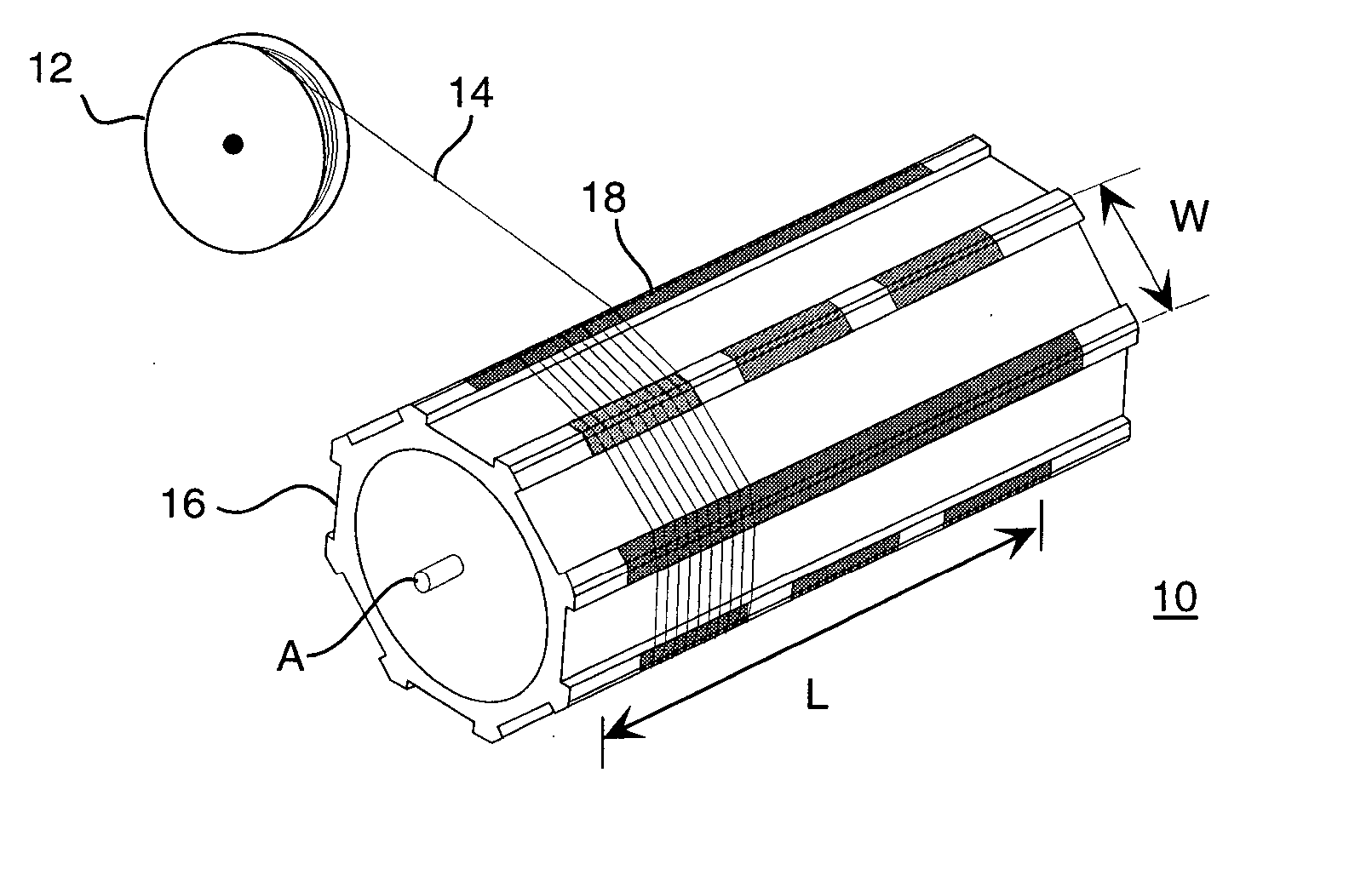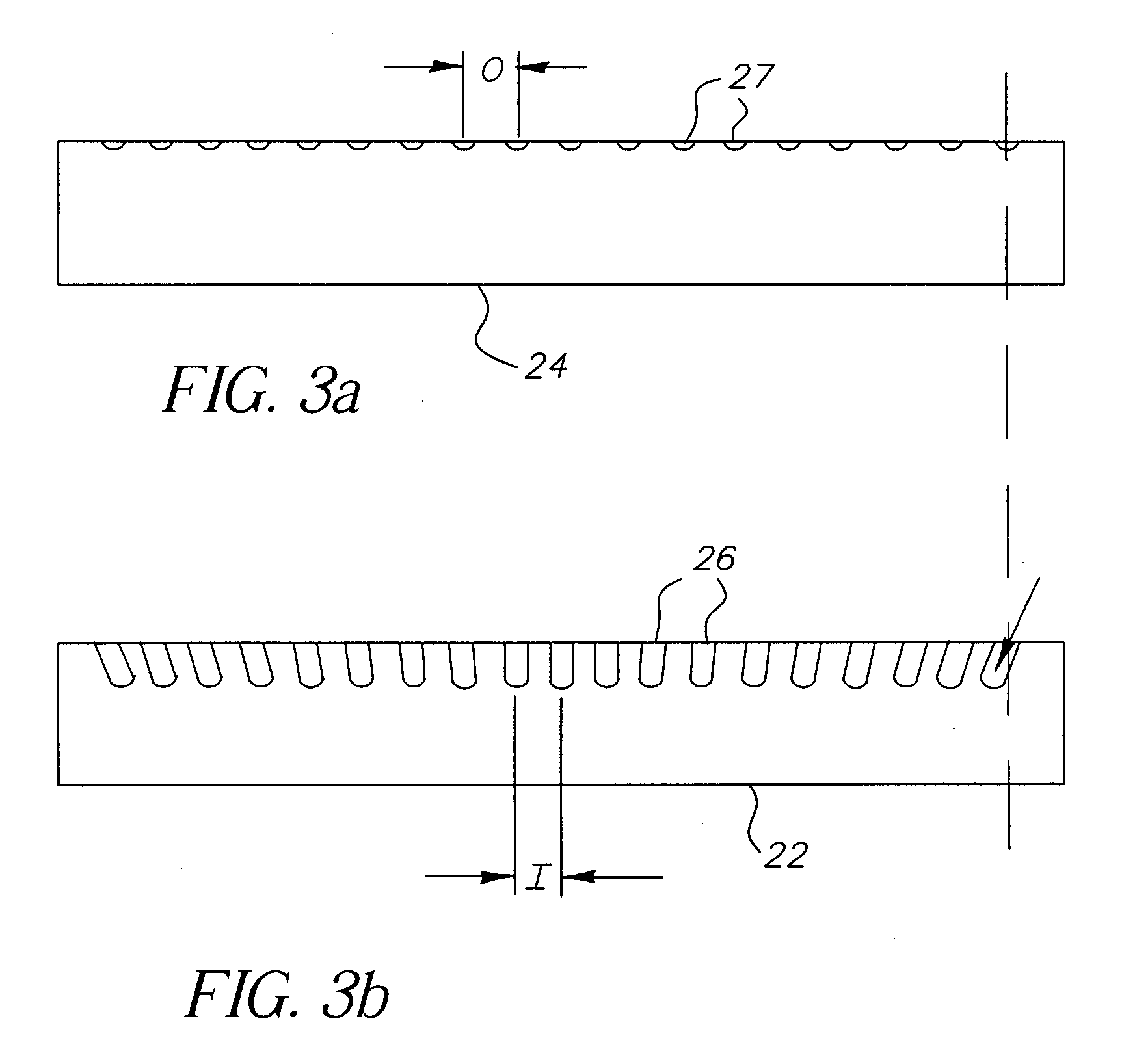Method for forming an optical converter
a fiber optic and faceplate technology, applied in the direction of bundled fibre light guides, semiconductor devices, solid-state devices, etc., can solve the problems of increasing the overall requirements for using fiber optic faceplates as optical converters for electronic image display, increasing the complexity of tiling arrangements, and reducing the cost of fabrication. , the effect of easy fabrication
- Summary
- Abstract
- Description
- Claims
- Application Information
AI Technical Summary
Benefits of technology
Problems solved by technology
Method used
Image
Examples
Embodiment Construction
[0036] The present description is directed in particular to elements forming part of, or cooperating more directly with, apparatus in accordance with the invention. It is to be understood that elements not specifically shown or described may take various forms well known to those skilled in the art.
[0037] In order to understand the particular apparatus and methods applied using the present invention for fabricating fiber optic faceplates, it is most instructive to look first at the basic structural building block fabricated using the apparatus of the present invention and used for assembling the fiber optic faceplate. Referring to FIG. 12, there is shown a portion of a ribbon structure 40 which serves as a novel elemental component for fiber optic faceplate fabrication. Ribbon structure 40 comprises an array of optical fiber segments 50, generally disposed parallel to each other, for guiding light from an input edge 46, over width W, to an output edge 48. Fiber segments 50 on input...
PUM
| Property | Measurement | Unit |
|---|---|---|
| width | aaaaa | aaaaa |
| length | aaaaa | aaaaa |
| adhesive | aaaaa | aaaaa |
Abstract
Description
Claims
Application Information
 Login to View More
Login to View More - R&D
- Intellectual Property
- Life Sciences
- Materials
- Tech Scout
- Unparalleled Data Quality
- Higher Quality Content
- 60% Fewer Hallucinations
Browse by: Latest US Patents, China's latest patents, Technical Efficacy Thesaurus, Application Domain, Technology Topic, Popular Technical Reports.
© 2025 PatSnap. All rights reserved.Legal|Privacy policy|Modern Slavery Act Transparency Statement|Sitemap|About US| Contact US: help@patsnap.com



